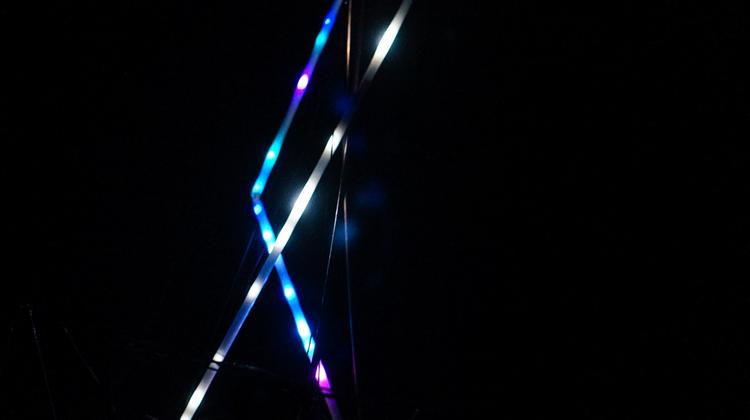
Prototyping with Tensegrity
'Tensional integrity' describes compressed components balanced with tensioned components into a stable self-equilibrated state. One can think of bones and muscles in the skeletal system as demonstrating a similar type of balance.
The image below shows a simple structure that exhibits tensegrity:

Many tutorials describe how to assemble a structure using tensegrity. In the following images, wooden rods purchased at a craft store are connected with carefully measured, fixed length thread.


Using elastic material for the tensioned components can make construction simpler to accomplish. PVC pipes and bungee cords are good modeling materials for this purpose.


Once a single component is self-balanced, it can be attached to another component with the same design. The tension must be adjusted between both layers to create a structure that will stand on its own.



The tensegrity model assembled above was designed to evaluate attaching LED strips to a larger structure. The documentation below shows the model placed into a state park in the Russian River.

The model's design can be scaled up to full length plexi tubes, copper pipes, and parachute cord. The cord uses knots that slip to adjust the tension. LED strips are fed through the plexi tubes to provide lighting.




The final structure, placed into a field, is around 12 feet tall.
Scaling up the tensegrity model was an exercise in iterating a design through scale, and the results were pleasing throughout the process. The mid-sized model was easy enough to construct and transport that additional models at that scale might be worthwhile to construct.
©2023, Secret Atomics